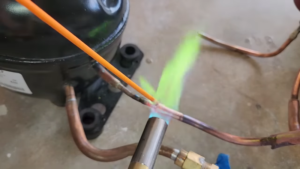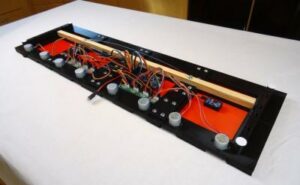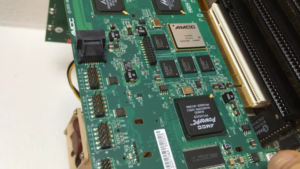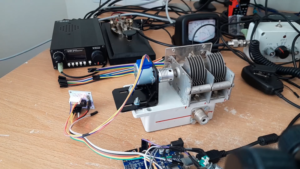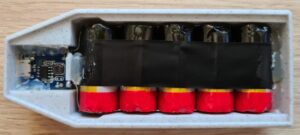It’s probably safe to say that most of us have had enough of the Great Balloon Follies to last the rest of 2023 and well beyond. It’s been a week or two since anything untoward was spotted over the US and subsequently blasted into shrapnel, at least that we know of, so we can probably put this whole thing behind us.
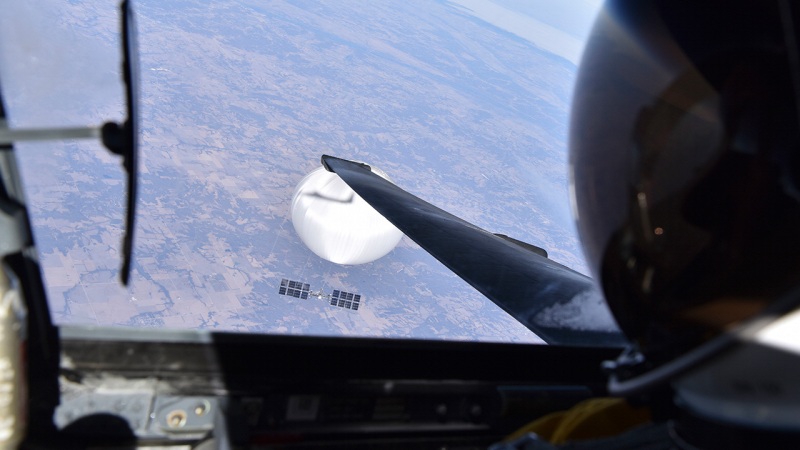 But as a parting gift, we present what has to be the best selfie of the year — a photo by the pilot of a U-2 spy plane of the balloon that started it all. Assuming no manipulation or trickery, the photo is remarkable; not only does it capture the U-2 pilot doing a high-altitude flyby of the balloon, but it shows the shadow cast by the spy plane on the surface of the balloon.
But as a parting gift, we present what has to be the best selfie of the year — a photo by the pilot of a U-2 spy plane of the balloon that started it all. Assuming no manipulation or trickery, the photo is remarkable; not only does it capture the U-2 pilot doing a high-altitude flyby of the balloon, but it shows the shadow cast by the spy plane on the surface of the balloon.
The photo also illustrates the enormity of this thing; someone with better math skills than us could probably figure out the exact size of the balloon from the apparent size of the U-2 shadow, in fact.
On the other hand, maybe you’re not sick of the whole balloon thing and you pine for the days when the sky was filled with them. Spoiler alert: it always was, and still is. Between the hundreds of radiosondes sent up twice a day every day to the hundreds of “pico balloons” that amateurs launch just for fun, there’s a lot of stuff floating around up there. And if you’d like a simulation of where one of these balloons might end up, check out the Spy Balloon Simulator. You can spawn a balloon onto the globe at any point and see where it would end up based on historic weather data. The simulation seems to make some assumptions about altitude, and the launch date seems fixed at November 11, 2022, so there are significant limitations. But it says right up front that it’s just for fun, and it is indeed cool to see that almost every path gets into a gyre of some kind, where the balloon just gets stuck before continuing.
In astronomy news, while the James Webb gets most of the attention these days, there are a lot of other telescopes doing fascinating work too. And one of them has captured one of the most amazing images we’ve seen — direct images of a bright exoplanet orbiting its star. Normally, exoplanets are observed indirectly, by watching for the subtle dip in a star’s brightness as the planet passes between it and us, for example. But this time, the aptly named Very Large Telescope in Chile used its adaptive optics to blot out the light from star AF Leporis in the constellation Lepus (we’d never heard of it either) and directly see one of the system’s planets.
The planet is a whopper, about five or six times the size of Jupiter, which is really big considering the star is only about the size of the Sun. What’s more, the whole system is almost brand new — only about 24 million years old and only about 87 light-years away. So looking at this system is an almost real-time look at both stellar and planetary formation.
And finally, with so few brick and mortar electronic surplus stores left, it’s sad to hear of yet another one falling on hard times. It seems like that’s the way of things, though, so we weren’t surprised to hear of yet another long-time surplus dealer feeling the pinch of reality.
P&T Surplus, located in Kingston, NY, has been a fixture of the local scene for decades. Located close to where IBM had a cluster of factories, P&T was well-positioned to buy scrap machines, excess materials, and large lots of overstock parts and resell them to a broad customer base. Over the years, though, factories closed and shut down source after source of surplus, and the customer base changed too. Squeezed from both sides and suffering from illnesses, the owners are now behind on their rent and have turned to crowdsourcing to hopefully get them over the hump. If you’re in the area, now might be a good time to stop by and see if there’s anything you need.
- SEO Powered Content & PR Distribution. Get Amplified Today.
- Platoblockchain. Web3 Metaverse Intelligence. Knowledge Amplified. Access Here.
- Source: https://hackaday.com/2023/02/26/hackaday-links-february-26-2023/
- 1
- 11
- 2022
- 2023
- a
- About
- After
- Alert
- All
- always
- amazing
- and
- Another
- apparent
- AREA
- around
- astronomy
- attention
- base
- based
- before
- behind
- BEST
- Better
- between
- Beyond
- Big
- Both Sides
- brand
- Brand New
- Brick and Mortar
- Bright
- broad
- buy
- capture
- check
- Chile
- Close
- closed
- Cluster
- considering
- content
- continuing
- Cool
- could
- customer
- data
- Date
- day
- Days
- dealer
- decades
- Dip
- directly
- doing
- down
- either
- Electronic
- embedded
- enough
- Every
- every day
- example
- Exoplanet
- exoplanets
- factories
- Falling
- fascinating
- February
- few
- Figure
- filled
- Finally
- fixed
- floating
- formation
- from
- front
- fun
- get
- gift
- globe
- gofundme
- good
- great
- hand
- Hard
- hear
- heard
- historic
- Hopefully
- HTTPS
- Hundreds
- IBM
- images
- in
- indirectly
- IT
- Jupiter
- Kind
- Know
- large
- Last
- launch
- light
- limitations
- links
- local
- located
- Look
- looking
- Lot
- Machines
- make
- Manipulation
- materials
- math
- max-width
- might
- million
- more
- most
- Named
- Need
- New
- news
- normally
- November
- NY
- Old
- ONE
- optics
- orbiting
- Other
- Overstock
- owners
- Parting
- parts
- passes
- path
- pilot
- planet
- Planets
- plato
- Plato Data Intelligence
- PlatoData
- Point
- present
- probably
- put
- real-time
- Reality
- remarkable
- Rent
- REST
- safe
- says
- scene
- seems
- selfie
- Shadow
- Shows
- Shut down
- Sides
- significant
- simulation
- since
- SIX
- Size
- skills
- So
- some
- Someone
- Source
- Space
- Spawn
- Spy Plane
- Star
- started
- Stellar
- Still
- Stop
- stores
- Subsequently
- suffering
- Sun
- Surface
- surplus
- surprised
- system
- telescope
- telescopes
- The
- The Area
- their
- There.
- thing
- things
- time
- times
- to
- too
- true
- Turned
- Twice
- us
- watching
- Weather
- week
- What
- which
- while
- Work
- would
- years
- youtube
- zephyrnet

